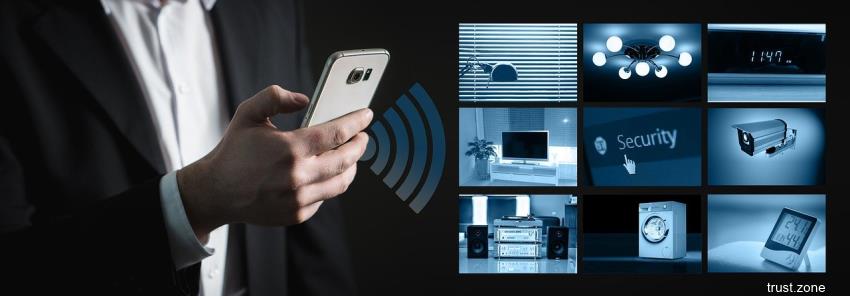A BYOD (Bring your own device) policy provides both opportunities and challenges for the business organization. But by following the right practices, organizations can leverage the advantages and make BYOD a valuable part of their company.
In this guide, let's take a look at some of the challenges faced by BYOD-following companies and ways to mitigate the effect.

It's acceptable for employees to bring their smartphones to work and use them strictly for personal use. But employees often use the same device for work-related matters such as sending emails, adding significant risk to the company's data.
These risks include:
Employees usually take their device wherever they go. This puts them at significant risk of loss or theft of the device, which ultimately puts the company's data in jeopardy of being compromised.
In the scenario that a device is lost, stolen, or damaged, any data that is not backed up in real-time can get lost permanently.
While public Wi-Fi spots are convenient, they are also a famous hunting ground for hackers. These hackers are always on the lookout for vulnerable devices and may put your data in danger if the device is compromised.
Jailbreaking is the process where the user removes the restrictions imposed by the manufacturer of the device. This process allows users to install unauthorized or third-party software. However, this increases the risk if an employee unknowingly installs malware or ransomware on their BYOD device.
Every operating system has its own set of security faults and vulnerabilities. This means that allowing the employees to use their devices on your network increases the risk of data breaches.
Any personal device that has been infected with malware or ransomware can spread to other devices sharing the same network and result in loss of data and downtime.
But despite the challenges, BYOD continues to be part of every organization. And let's face it: in today's digital era, you can't stop employees from bringing their own personal devices to work. Moreover, with the work from the home culture being adopted everywhere, the employees have to take office devices home in order to stay updated with their tasks.
Following the best IT security tips helps mitigate the risk involved with BYOD. Some other considerations that you can make as a company include:
Organizations need to implement a formal BYOD policy that revolves around its usage, management, and security. A BYOD policy can also act as a disclaimer to protect all parties involved with the use and remain a prominent part of the IT department.
VPN protects your incoming and outgoing traffic on your device. Morevorer, it prevents hackers from tracking your device or your online activity. Your browser history is also hidden from prying eyes. VPN makes your secure and safe while you on public or guest Wi-Fi.
In order to enhance security, make passwords and two-factor authentication compulsory for all devices using the BYOD protocol. A password policy protects devices from unauthorized access by people who have malicious intentions.
Make sure the passwords are long and unique and not every day phrases like birthdays and spouse name. According to report, 75% of Americans use weak passwords and the most popular password in America is a... curse word.
Make sure each device using the company's data is secured and backed with reliable anti-virus software. The anti-virus software should be updated as well with the latest threat and malware protection.
Blacklisting involves prohibiting the installation of a particular application on the devices that are being used for work purposes as well. This includes apps such as file sharing and social networking apps that make the mobile vulnerable to data theft and hacking.
The easiest way to blacklist applications is through a mobile device management platform that allows IT admins to secure and enforce policies on the authorized devices.
Impose restrictions on the mobile device to enhance the user's experience. This means that an employee is able to access only the data and software required to do their job. The protocol can reduce the effects of certain types of malware and limit the fallout in the event of a data breach.
While a thought-out BYOD policy will help you minimize the risk of a security breach, a backup process will help you bring back the system to its original state when something goes wrong. Make sure you backup everything that is on your system to ensure that any data that is stored on your BYOD device can be quickly recovered.
Regardless of your thoughts, BYOD is here to stay and with 67% of employees using their personal devices at work, there is not much you can do to avoid the issue. Remaining proactive regarding security and following the best practices will help you minimize the security risk and keep your system secure.
Author's Bio
Luke Smits is a technology specialist who can translate anything IT into something anyone can understand. With more than 20 years in the business and having worked with multinational corporations, government departments and small businesses, there isn’t an IT issue he hasn’t seen and solved.